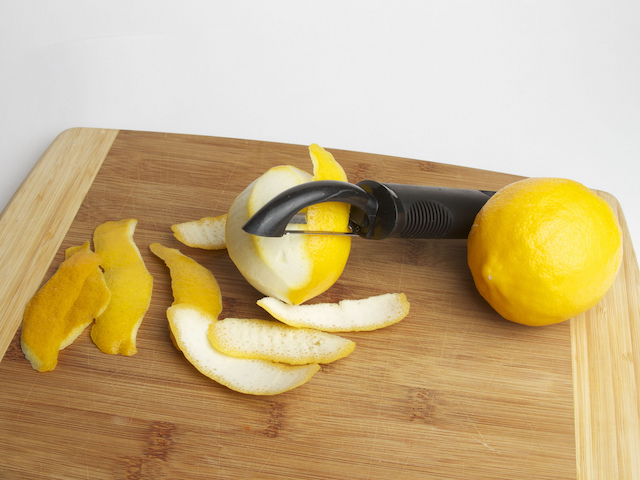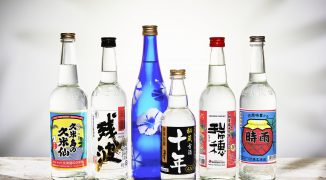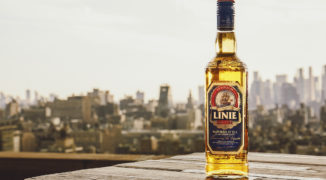One old school syrup or vintage ingredient after another is prominently returning behind the bar, and perhaps none is hotter right now than oleo saccharum.
“Oleo saccharum is the ‘O.G.’ of syrups produced by bartenders during the Jerry Thomas days,” says Max Messier of Cocktail & Sons, who produces what was the first commercially available oleo saccharum syrup.
As with many of these glorious returns, one individual can be thanked for spearheading the comeback. “You can point pretty directly to David Wondrich and his book ‘Punch’ for the reinvigoration,” says Neal Bodenheimer of Cure in New Orleans. Cure is one of a growing number of establishments to utilize house-made oleo saccharum as the foundation for punches.
“What ends up happening is that you get this acidulated sugar and that basically makes up your punch base,” explains Bodenheimer. “Punch is like making soup. If you can put that base down right, you can make a great punch, there’s no doubt. This is that backbone. The great thing is, when you expand the punch on top of something so strong and flavorful, it becomes really nuanced.”
While Wondrich’s historical digging may be the foremost reason that oleo saccharum is around today, its original prominence was based on necessity. “You have to look at citrus and the way we use it today,” says Bodenheimer. “It’s abundant. It used to be that it’s seasonal, and in some ways, just really hard to find. And so you wanted to get every single bit of it that you could. You wanted to use the juice, and you wanted to use the peel to the greatest extent.”
Oleo saccharum, which basically translates to sugar oil, is a technique entirely premised on sugar’s ability to extract moisture. “Oleo saccharum is the process of extracting oil from citrus peel,” says Bodenheimer. “It’s really that simple, it’s not a very complex thing.”
Any type of citrus can be used. For instance, at Cure, Bodenheimer has created oleo saccharums with everything from pomelo to Meyer lemons. At New York’s Masa Y Agave, John McCarthy makes four varieties of oleo saccharum: orange, blood orange, lemon and lime. His David Snowie punch, incorporating his blood orange oleo, just took home top honors from Cochon 555’s Punch Kings competition.
The drink is made with Breckenridge Bourbon, Oloroso sherry, cranberry and blood orange juices, the blood orange oleo saccharum, and McCarthy’s house grapefruit bitters. In addition to the four oleos, the grapefruit bitters is one of four that McCarthy also produces in-house, along with lavender, “hot stuff” and celery bitters.
McCarthy follows a pretty simple formula for creating his oleo. He uses two ounces of white sugar per one whole citrus, or one ounce in the case of smaller citruses with thinner rinds, such as lime.
He’ll combine the peels and sugar, mix, and then let it sit overnight, or for a minimum of four to six hours. He then strains out the oil and adds in half as much water as sugar, or in most cases, one ounce of water per citrus to create the actual syrup. As a rough guideline, 12 oranges should produce approximately one quart of oleo saccharum syrup.
McCarthy always takes the step of turning the actual oleo saccharum, the extracted citrus oil itself, into a syrup. However, without taking that step, the oil itself is simply an even more potent ready to go ingredient.
Messier takes a slightly different approach at Cocktail & Sons. “I use a combination of lemon and orange peels with granulated sugar vacuum-sealed and rested for a couple of days,” he explains. “To bring a ‘punched-up’ effect to the oleo, I brew an original recipe of fresh-cut lemongrass, toasted cardamom and ginger, and blend it with the oleo bags.”
For someone in a time pinch, Bodenheimer also offers a quicker solution. “If you’re in a hurry and can’t let it extract, that’s when you boil water and put it on top,” he offers. “It’s like tea, it’ll just pull that oil and get as much as you can get, but that’s if you’re in a hurry. I just like to let it sit and do its thing.”
He also brings batches ready to go for events. “A lot of times we’ll put [the peels and sugar] in quart containers, and just put it together on-site,” he says.
While punches and oleo go hand in hand, the ingredient has applications for other beverages as well, and Messier has seen bartenders use his oleo to great effect elsewhere, like a “heart-stopping” French 75.
“The Collins-style cocktail is pure rock and roll with the oleo saccharum,” says Messier. He also recalls sitting with Jeffrey Morgenthaler, whom he credits alongside with Wondrich for popularizing oleo with a daiquiri using Cocktail & Sons oleo saccharum at Portland Cocktail Week in 2015. “He commented on how awesome our oleo saccharum works in cocktails, and I checked that item off my bucket list,” he says.
Where there’s sugar and citrus, there could be oleo. And where there’s oleo, an excellent punch or a new and improved cocktail awaits. Sound like it’s time to acidulate.





